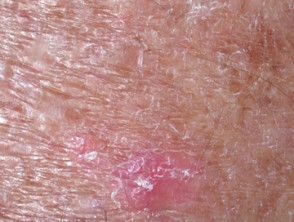- Case-Based Roundtable
- General Dermatology
- Eczema
- Chronic Hand Eczema
- Alopecia
- Aesthetics
- Vitiligo
- COVID-19
- Actinic Keratosis
- Precision Medicine and Biologics
- Rare Disease
- Wound Care
- Rosacea
- Psoriasis
- Psoriatic Arthritis
- Atopic Dermatitis
- Melasma
- NP and PA
- Skin Cancer
- Hidradenitis Suppurativa
- Drug Watch
- Pigmentary Disorders
- Acne
- Pediatric Dermatology
- Practice Management
- Prurigo Nodularis
- Buy-and-Bill
News
Article
Post Hoc Analyses Examine Real-World Efficacy and Safety of Tirbanibulin in Actinic Keratoses
Author(s):
The analyses were published in the Journal of the European Academy of Dermatology and Venereology.
Dermatology clinicians recently reviewed several studies shedding light on tirbanibulin's efficacy and safety in treating actinic keratosis (AK), publishing their analyses in the Journal of the European Academy of Dermatology and Venerology.
1. Descriptive Analysis of Medical History and Medications in Tirbanibulin-Treated AK Patients: A Post Hoc Perspective
Objective: Explore the medical history and medications of AK patients treated with tirbanibulin 1% ointment in phase-III trials.
Key Findings: Across 2 trials involving 353 patients, tirbanibulin showcased a 49% complete clearance rate at day 57. Adverse events were minimal, with 16% reporting mild application site pain and 9% pruritus. The patients, predominantly elderly, exhibited common medical conditions, with neoplasms, vascular disorders, and nutrition/metabolism issues prevailing. Concomitant medications were prevalent, primarily for cardiovascular, alimentary/metabolic, and hematological disorders.
2. No Correlation of Baseline Lesions and Local Skin Reactions in Tirbanibulin-Treated AK Patients: Insights from Pooled Phase-III Trials
Objective: Investigate the correlation between baseline lesions and local skin reactions (LSRs) in patients treated with tirbanibulin.
Key Findings: Analyzing data from 353 tirbanibulin-treated patients, the study revealed no correlation between the number of baseline lesions and the severity of LSRs. Most LSRs were mild-to-moderate, emphasizing tirbanibulin's favorable safety profile. Application site pain and pruritus were predominantly mild.
3. Real-life Experience: Tirbanibulin Efficacy in Previously Treated AK Patients
Objective: Report on tirbanibulin's real-life efficacy in 6 patients with previously treated AK.
Key Findings: In 6 cases with diverse AK treatment histories, tirbanibulin demonstrated effectiveness in clearing or reducing lesions, enhancing patient quality of life. Cases highlighted successful outcomes in patients with recurrent AKs, emphasizing tirbanibulin as a valuable option in real-world scenarios.
4. Tirbanibulin's Therapeutic Potential in Porokeratosis: A Promising Novel Approach
Objective: Explore the efficacy of tirbanibulin in porokeratosis.
Key Findings: In a study involving 4 patients, tirbanibulin demonstrated efficacy in reducing lesions associated with disseminated superficial actinic porokeratosis (DSAP) and porokeratosis of Mibelli. Patients reported no major adverse reactions.
5. Tirbanibulin in Skin Field Cancerization Management for Solid Organ Transplant Recipients: Bridging the Therapeutic Gap
Objective: Assess tirbanibulin's response in skin field cancerization in solid organ transplant recipients.
Key Findings: In 2 real-world cases, tirbanibulin demonstrated efficacy in managing skin field cancerization in solid organ transplant recipients. The treatment was generally well-tolerated.
6. Real-world Experience of Tirbanibulin in UK Centers: Navigating AK Treatment in Routine Clinical Practice
Objective: Share insights from tirbanibulin's real-world use in 2 UK centers.
Key Findings: Analyzing 12 patients over a 6-month period, the study highlighted tirbanibulin's effectiveness and tolerability. With patients completing the 5-day regimen without interruption, tirbanibulin showcased demonstratable resolution of AKs, aligning with clinical trial data.
7. Symposium: Balancing Efficacy and Tolerability in AK Treatment - A Dermatology Specialist Perspective
Objective: Discuss the symposium focusing on the efficacy and tolerability of various AK treatments, including tirbanibulin.
Key Findings: The symposium compared different AK treatments, emphasizing the importance of efficacy, safety, and tolerability. It underscored the patient's willingness to trade-off between efficacy and treatment burden.
Reference
Pellacani G, Schlesinger T, Bhatia N, et al. Efficacy and safety of tirbanibulin 1% ointment in actinic keratoses: Data from two phase III trials and the real‐life clinical practice presented at the European Academy of Dermatology and Venereology Congress 2022. J Eur Acad Dermatol and Venereology. 2023;38(S1):3-15. doi:10.1111/jdv.19636







